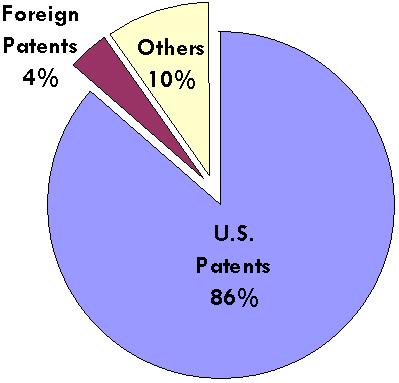By law, 2.5% of all Federal extramural research funds are set aside for contracts or grants under the Small Business Innovative Research (SBIR) program – approximately $2 billion each year. SBIR contracts are typically $100k for a Phase I proof-of-concept. If the Phase I is sufficiently promising, an agency might award a Phase II contract for $750k-$1M for development of a working prototype embodying the novel concept. SBIR’s are small by the standards of government spending, yet they provide seed funding for small businesses as well as an opportunity for Federal agencies to explore innovative technical solutions to vexing problems. They can also telegraph what an agency is thinking and the directions in which they want to go. Earlier this week, the Department of Homeland Security (DHS) issued the SBIR solicitation (excerpted below) for a “Detector for Smuggled Currency:”
The Department of Homeland Security’s Science and Technology (S&T) Directorate is seeking a device that will search for and identify bulk quantities of currency, principally U.S. and Canadian, secreted on persons, in hand baggage and luggage, and/or in privately owned vehicles. The device can in no way present a risk or hazard to any persons being screened, their baggage, or their vehicles and should, to the extent possible, be operated without the knowledge of the persons being screened. The device shall be capable of screening a person, with luggage, at a walking speed and vehicles being driven slowly through an inspection area. The resultant operator display will be of sufficient clarity and resolution to allow operator verification of any machine detections. Although the device may be mounted in a fixed configuration for use in a land inspection venue, it must be portable, or there must be a portable variant, to accommodate movement within the venue or movement to another venue. [Emphasis added]
From the solicitation title, DHS is thinking of using the solicited currency detection systems at border crossings to detect money smuggling. But the potential for abuse is significant. Under a process called “asset forfeiture,” law enforcement agencies have the authority to seize your property including large amounts of cash and institute legal proceedings against – not you but rather against your property. In this strange new world, your property is guilty until proven innocent and the agency that seizes it gets to auction it off and spend the proceeds (or spend the cash directly) on pretty much whatever they want (including margarita machines for their office), according to reporting by Radley Balko. A proliferation of currency detectors combined with asset forfeiture is a recipe for highway robbery on a grand scale.
One would hope that random currency scans without a warrant will not be allowed based on the Supreme Court’s 5-4 decision in Kyllo vs. U.S. (2001). In that case the Court threw out a conviction where an officer used thermal imaging of a suspect’s house to develop probable cause of a drug growing operation. This close ruling means that the decision is vulnerable to be overturned. And would this even apply to an asset forfeiture as opposed to a criminal proceeding?
In any event this is a topic worth continued monitoring.

